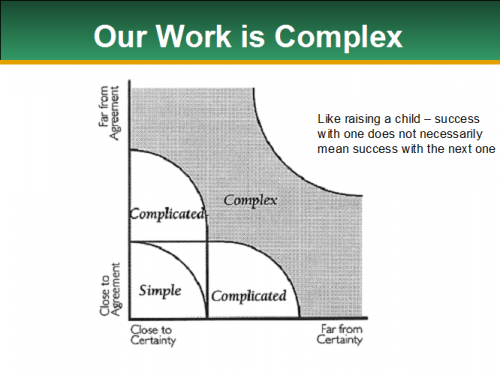Proven leader can help move communities forward
Paul Born's research on collective impact and building community includes suggestions for community leaders interested in working together to achieve meaningful goals.
Paul Born's presentation in Traverse City, Michigan on April 9, 2014 focused on building community and collective impact, and could be useful for those who, according to Born, “want to better understand the value of community and neighbors, and their importance in building belonging and inclusion into the services they offer or the social-change strategies they affect.” Watch the complete video for more information.
Born is the President and cofounder of the Tamarack Institute which has provided leadership in Canada on issues of citizen engagement, collaborative leadership and community innovation since 2001. More than 12,000 subscribers engage in Tamarack’s learning communities. Tamarack also sponsors “Vibrant Communities Canada,” is active in cities across the country, and has reduced the impact of poverty for more than 200,000 people, collaboration and focusing on “creating communities where poverty does not exist.”
Prior to Tamarack, Born was the Executive Director and co-founder of the Community Opportunities Development Association, one of Canada’s leading community economic development organizations, and was recognized by the United Nations as one of the top 40 projects in the world. Born was elected into the world’s largest network of social innovators, as a Senior Ashoka Fellow in 2013.
During his presentation, Born highlights Five Conditions of Collective Impact:
- A common agenda
- Shared measurement
- Mutually reinforcing activities
- Continuous communication
- Backbone support
These conditions stress the importance of strategic planning and review with a shared message and core support from those believing in the work of the group. These conditions, however, require a multisector leadership team, which he also highlights as individuals who must:
- Engaging the right stakeholders (donors, professionals, clients)
- Embracing diversity (all cultural groups, ages, etc)
- Multisector representation (government, voluntary sector, business community)
- Organize around a common value (ending violence) - not tactics
- Build relationships and trust by developing a common understanding
For a comprehensive overview, his presentation is available online. In the diagram below, the complexity of working in community issues is visually represented by the image of moving from certainty and agreement toward uncertainty and disagreement when we work with complex and complicated issues.

In order to learn more about collaborative leadership, please review additional books by Born: “Community Conversations: Mobilizing the Ideas, Skills, and Passion of Community Organizations, Governments, Businesses, and People,” which has a first and second edition along with his most recent book Deepening Community: Finding Joy Together in Chaotic Times.
The Michigan State University Extension Leadership and Community Engagement team offers professional development training, including volunteer board development, communicating through conflict, meeting management and facilitation skills development, and organizational strategic visioning and planning.



 Print
Print Email
Email




